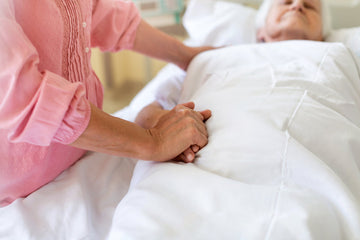
Bedsores or pressure ulcers are injuries to the skin and underlying tissue caused by prolonged pressure on the skin or due to repeated friction on the skin. Bedsores most often develop on skin that covers bony areas of the body. Bedsores are more likely to develop in individuals who are bed-bound or paralyzed.
Repositioning the body every 2 to 3 hours can significantly decrease the potential of developing pressure sores.
The most common sites are the tailbone and heels. The other sites include the back of the head and ears, the shoulders, the elbows, the lower back, the hip, and the inner knees. Pressure injuries may also form in places where the skin folds over itself. And they can occur when medical equipment puts pressure on the skin.
In people who are wheelchair-bound, bedsores often occur on the skin over the following sites:
- Tailbone or buttocks
- Shoulder blades and spine
- Backs of arms and legs where they rest against the chair
For bedridden people, bedsores develop on:
- The back or sides of the head
- The shoulder blades
- The hip, lower back, or tailbone
- The heels, ankles, and skin behind the knees
Bedsore on Buttocks
The hip bones, buttocks, and tailbone are more likely to develop bedsores in people who are paralyzed or who are wheelchair-bound. Paralyzed individuals will often develop bedsores through a loss of sensation from the waist down and so they cannot change their position. Individuals bound to a wheelchair too may not be able to change positions to relieve the pressure on the tailbone, back of the legs, and buttocks.
Friction with the clothes and exposure to body fluids such as urine can further increase the risk of developing bedsores.
Pressure Sore on Heel
Developing a pressure sore on the heel is often caused due to confinement in a bed or wheelchair. Tight bed sheets can constrict the foot and ankle, increase friction and increase the risk of developing a pressure sore on the heel when the patients are unable to move their legs.
Pressure Ulcer on Head
A pressure ulcer on the head is often undetected because it can be hidden by the patient's hair. This type of pressure ulcer is often caused by immobility as seen in a paralyzed person or in a person who is in a coma. The head must be repositioned every 2 to 3 hours to minimize the potential of developing bedsores.



